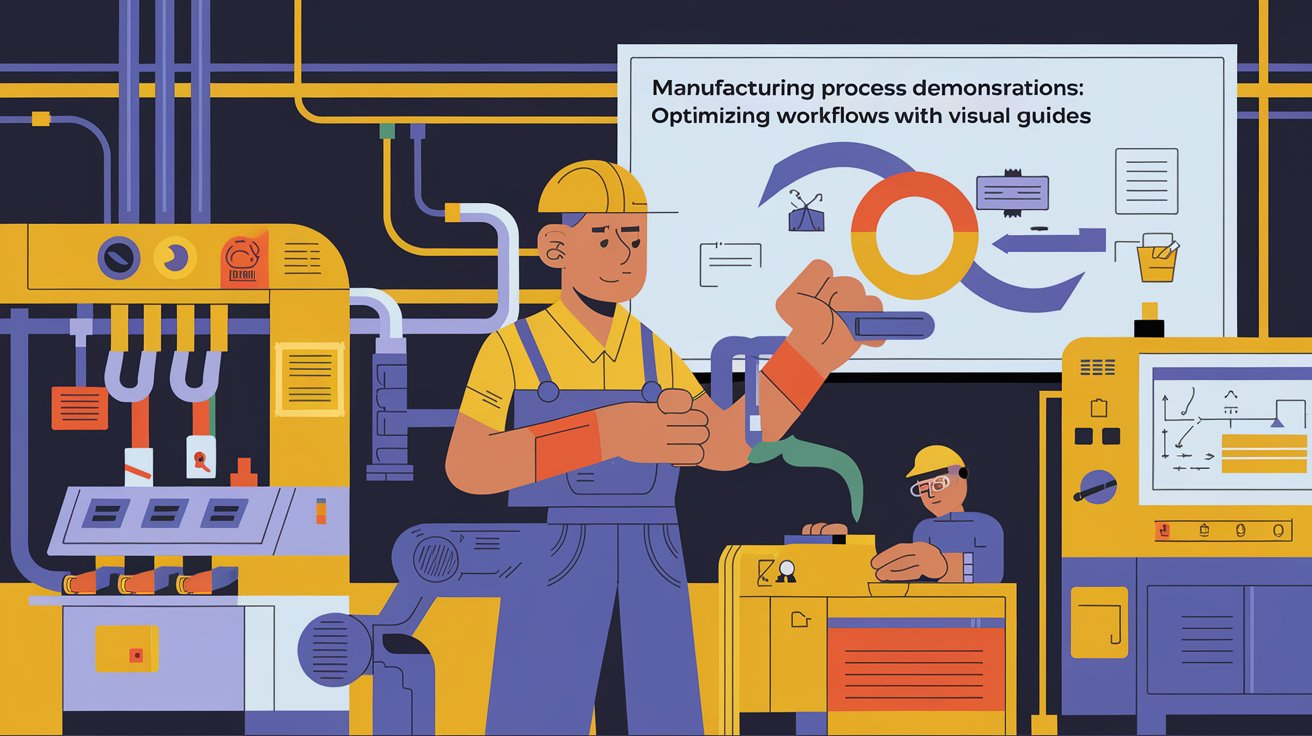
A picture is indeed worth a thousand words. Visual guides are the best way of making production and manufacturing processes of any industry simple without sacrificing efficiency. They convert complex processes into very digestible visual representations that remove communication gaps, facilitate cost-effective improvement practices, and reduce errors.
The Meaning of Visual Management in Manufacturing
Visual management is an approach that employs visual tools for communicating information. It takes everyone from the shop floor to the executive suite by making this understanding clear to all.
Features of Visual Guide Implementation
- Better Communication: Visual aids overcome language barriers and eliminate the need for lengthy textual instruction, allowing team members from different backgrounds to quickly grasp processes.
- Reduced Errors: Clear visuals indicating instructions and ways will lead to a lower probability of errors, resulting in better products and lower wastage.
- Increased Efficiency: Properly laying down processes visually enables the employee to grasp tasks faster.
Beyond that, visual tools identify production bottlenecks and unproductive areas, which lead to continuous improvement.
Fundamental Visual Tools in Making
- Process Flow Diagrams: These diagrams are designed to chart each step in completing the manufacturing process.
- Kanban Boards: They originated from the principles of lean manufacturing.
- Andon Systems: Real-time identification of issues between teams allows them to react quickly to problems.
- 5S Labels and Signage: It is about the 5S methodology (Sort, Set in order, Shine, Standardize, Sustain).
- Visual Job Instructions: These use images, diagrams, and perhaps a few words to guide workers in carrying out the jobs.
Read our blogs: Major Industries in West Bengal Driving Manufacturing Growth
Execution of Visual Guides: A Sequential Process
- Current Assessment of Processes: Begin with a complete assessment of current ways of doing things, determining where visual tools could assist in making complex tasks easier. An assessment helps identify bottleneck areas and chances for improvements.
- Team Engagement: Workers play a crucial role in making sure the visual tools are successful. By having conversations with the team, we may learn more about their problems and gain some ideas on the kinds of visual aids that could be useful for their daily work.
- Visual Tool Development: Flowcharts, diagrams, or digital dashboards that are meant for quick comprehension could be examples of this.
- Pilot and Improve: Testing the application of these tools in a trial environment allows a company to ensure their effectiveness before full implementation. This also leads to soliciting feedback from the user community to improve and refine these tools.
- Implement Across-the-Board: Following the trial successes, the organization should launch visual guides across departments. Another great thing to take place is setting up training so employees know and feel comfortable using them properly.
- Monitor Improvements: Constant assessments and collecting feedback weigh in on keeping the visual tools current, aligned with changing demands, and continuously optimizing and enhancing the processes.
Challenges and Considerations
While there are several benefits to visual guides, there are also some challenges to consider:
- Overcomplicated: These tools might be ineffective when blasted with too much information. Aim for simplicity and clarity.
- Employee Resistance: There may be resistance from staff concerning certain tools.
- Maintenance: Regular maintenance of visual tools must also be done.
Visual Management on the Horizon
Digital media like augmented reality (AR) and virtual reality (VR) are increasingly being included in visual management. These technologies allow for descriptive immersion, where workers stand to benefit immensely from the interaction with virtual simulation of the processes, thus further strengthening understanding and efficiency.
Closing Thoughts
To conclude, visual guides are reinventing the world of manufacturing by conquering mental hurdles and treating complexity as obfuscation. By adopting visual management, firms will improve communication, minimize errors, and enhance a culture of continuous improvement, all of which bode well for their long-term success in the competitive arena.
For more knowledge on innovative manufacturing practices and entrepreneurial strategies, you can visit Entrepreneur India.









